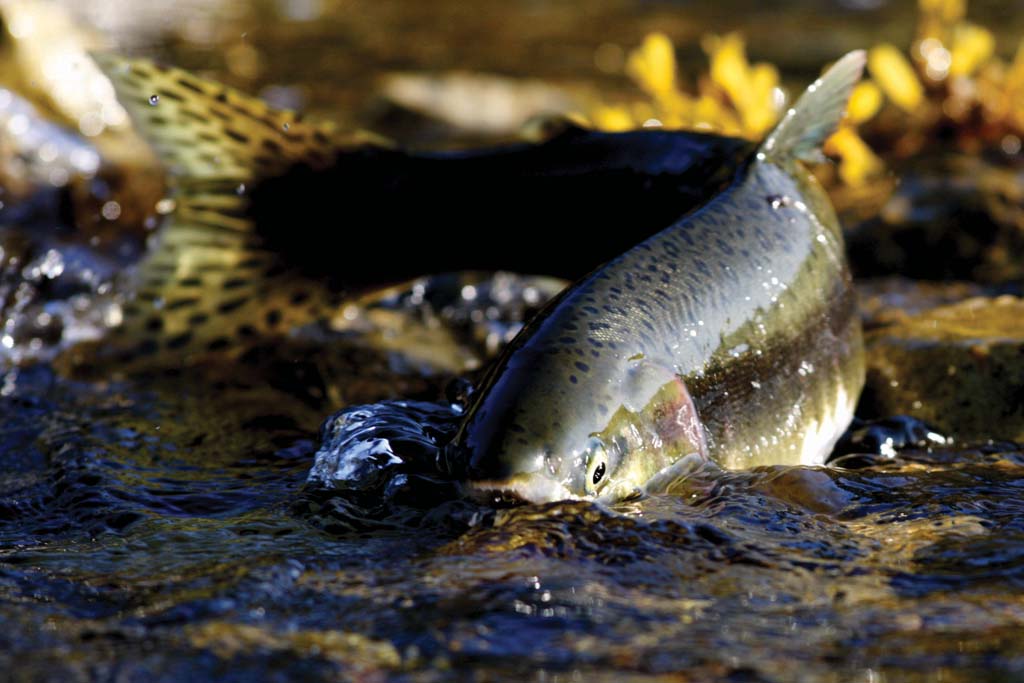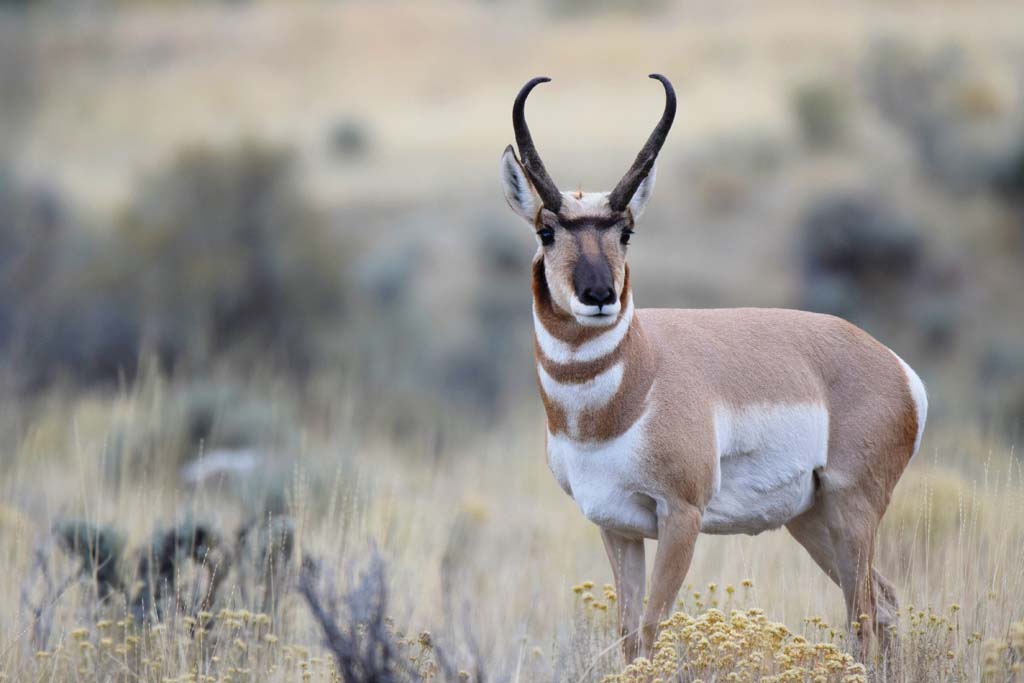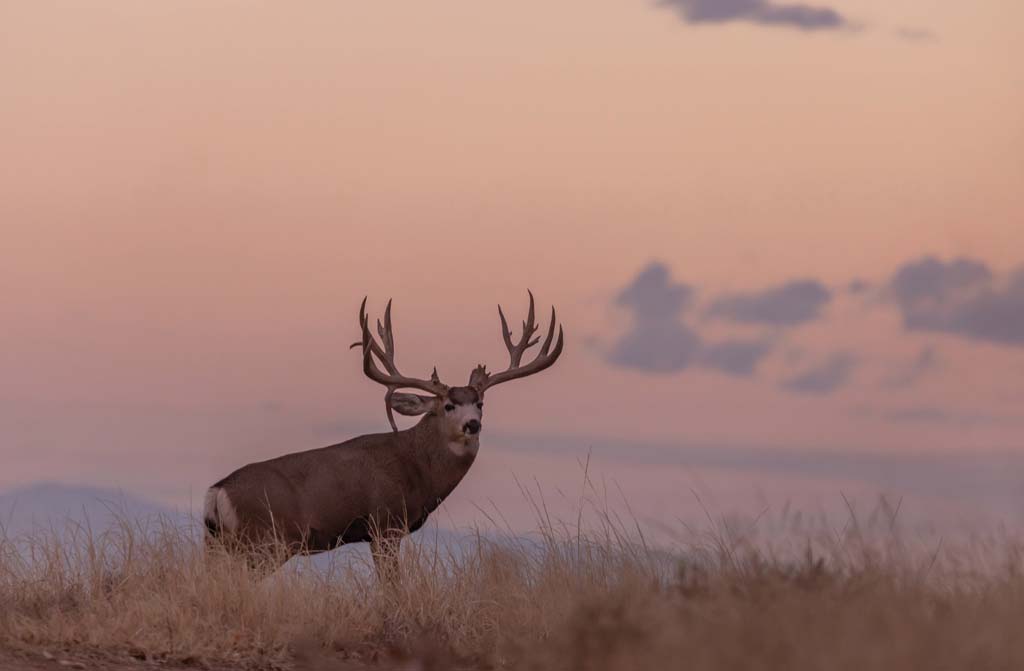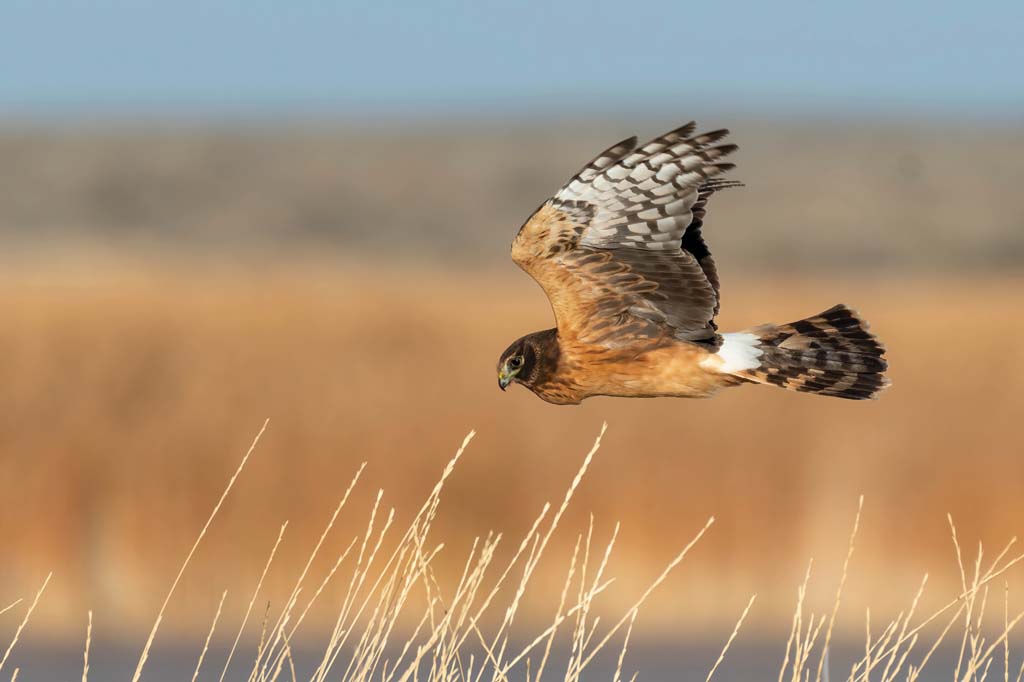By air, land and water, Idaho’s wildlife is on the move. Look to the skies or watch the mountains and valleys to see evidence of different critters on their annual or seasonal migrations from summer habitats to winter habitats. Idaho is still a predominantly rural state and the large tracts of forest, riparian, woodlands, wetlands and shrub habitat, along with agricultural lands, means that many migrations still thrive. Here are a few highlights by hoof, fin, and wing.
CHINOOK SALMON AND STEELHEAD

A salmon swims up a stream in Alaska at sunset
Chinook salmon and steelhead migrate over 900 miles from Stanley / Redfish Lake down the Salmon, Snake and Columbia rivers to the Pacific Ocean. These amazing fish then change their body chemistry to adapt from freshwater to saltwater, spend several years feeding in the Pacific Ocean, often swimming thousands of miles to their feeding grounds, before traveling 900 miles and 7,000 feet in elevation back to Idaho to spawn.
MONARCH BUTTERFLY

Butterfly Orange Tiger or Danaus chrysippus on pink globe amaranth flower with blurred yellow bokeh background
The Idaho official state insect. Every fall, monarch butterflies make the 2,500-mile trek south to Mexico where they live in hibernation for six to eight months. Monarchs that live west of the Rockies travel a thousand miles to Pacific Grove, California, where they hibernate in eucalyptus trees.
SANDHILL CRANES

A pair of sandhill cranes in an Idaho field. Sandhill cranes mate for life; this is most likely a male and female pair.
One of the oldest living birds on the planet, Sandhill cranes winter in California, Texas and northern Mexico, and migrate to Idaho in the spring, traveling as far north as the Arctic coast of Canada. They fly at a speed of 25 to 35 mph and typically travel 200 to 300 miles per day, but can reach 500 miles in a day with a good tailwind.
PRONGHORN ANTELOPE

Posing Antelope
Fossil evidence suggests that pronghorn have been roaming North America for up to 20 million years—they are the only large mammals remaining from the Pleistocene Era (the time period of woolly mammoths). Pronghorn have one of the longest land migrations in the continental U.S.—typically about 150 miles but can reach as many as 300 miles. In Idaho, they migrate from Craters of the Moon National Monument and the Boise basin through the Pioneer Mountains and into Challis or over the border to Montana—about 160 miles.
MULE DEER

Mule Deer Buck at Sunrise During the Fall Rut
Mule deer are the most common large mammal in Idaho, and the largest of the two deer species in the state. Migration patterns tend to be from their summer habitat higher up on mountain slopes to lower-elevation valleys during the winter months. Mule deer may migrate 50 to 75 miles—although, in 2016, a female mule deer was recorded as migrating 242 miles from Wyoming to Island Park, Idaho.
RAPTORS

northern harrier riding the winds above a wetlands marsh
Raptors travel from their summer breeding grounds in Idaho to Mexico and Central AND South America in the fall, returning again in the spring. The Morley Nelson Snake River Birds of Prey National Conservation Area (right outside Boise) has the largest population of nesting raptors in the contiguous U.S.


